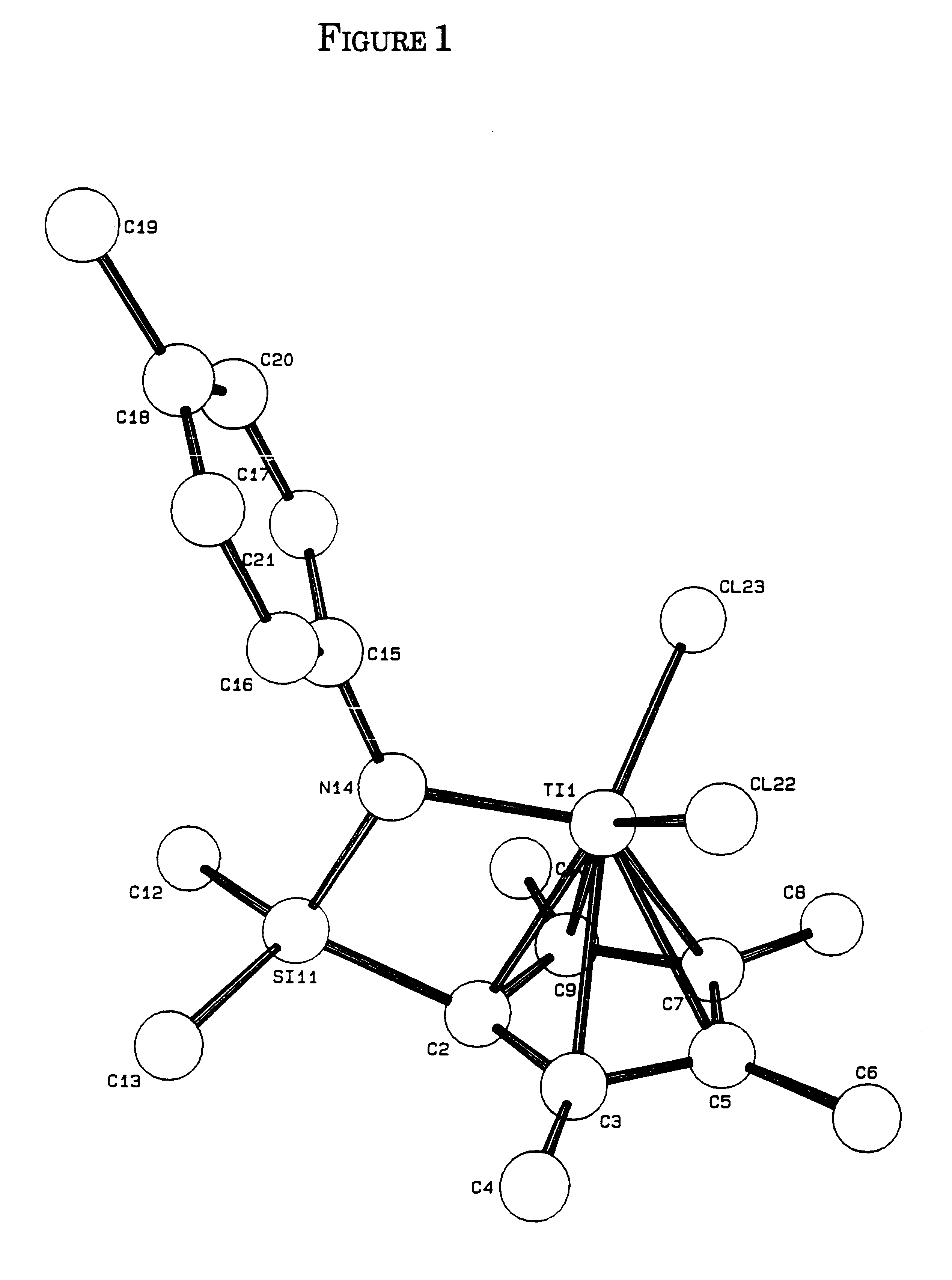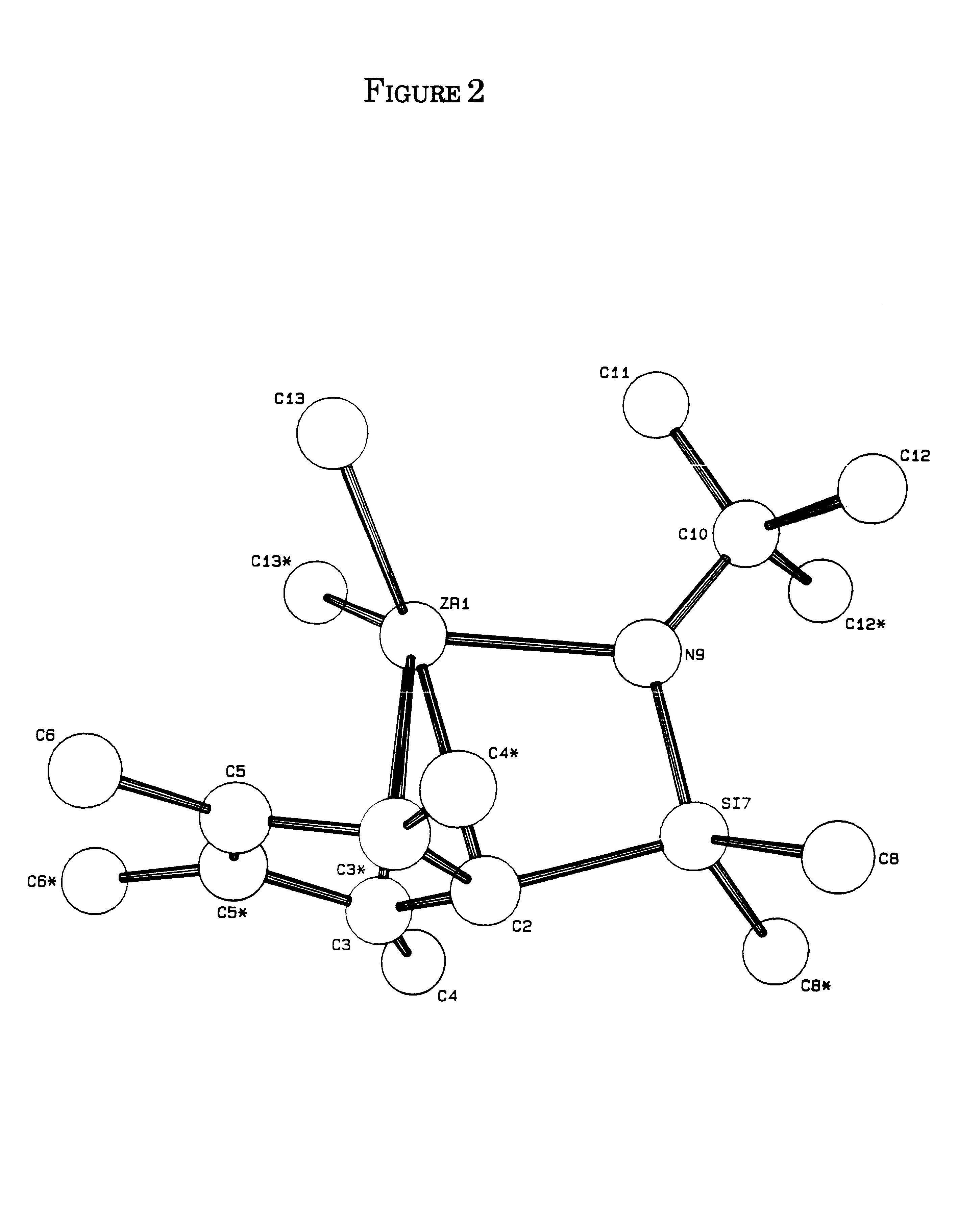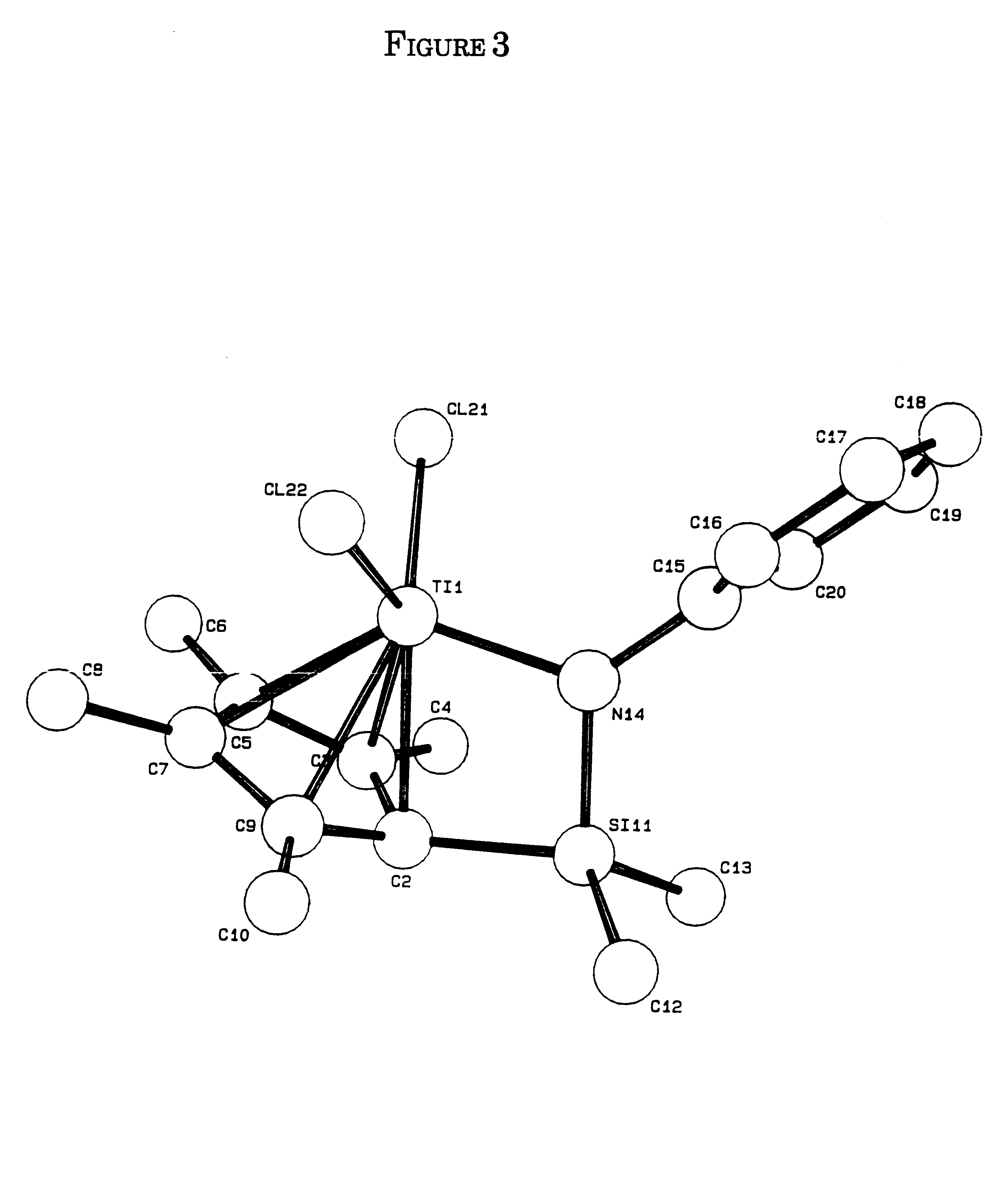Olefin polymerization process using supported constrained geometry catalysts
a technology of constrained geometry and polymerization process, which is applied in the direction of group 4/14 element organic compounds, group 3/13 element organic compounds, group 5/15 element organic compounds, etc., can solve the problems of low molecular weight polymerization, inability to achieve high activity of previously known addition polymerization catalysts, and polymerization of numerous monomers, etc., to achieve less constraint than
- Summary
- Abstract
- Description
- Claims
- Application Information
AI Technical Summary
Benefits of technology
Problems solved by technology
Method used
Image
Examples
example 1
Preparation of (Tert-butylamido)dimethyl(tetramethyl-η5-cyclo-pentadienyl)silane zirconium dichloride
[0171]To 0.443 g (1.90 mmol) ZrCl4 in a flask was added 8 mL diethyl ether, then 15 mL tetrahydrofuran (THF). To the resulting slurry was slowly added a solution of 0.500 g (1.90 mmol) dilithium (tert-butyl-amido)dimethyl(tetramethylcyclopentadienyl)silane in 15 mL THF. The resulting yellow solution was stirred for several days. The solvent was removed to give a gummy residue, which was extracted with 5 / 1 (volume) diethyl ether / pentane and filtered from a white solid. The solvent was removed from the yellow filtrate to give a light-yellow powder. Recrystallization from ether / pentane (5 / 1) yielded the product (C5Me4(Me2Si—N-tert-Bu)ZrCl2) as an off-white crystalline solid. The yield was 0.2207 g (28.2%). Identification was made by 13C and 1H NMR.
[0172]A. Five mL of a 1.009 M solution of methyl aluminoxane (MAO) in toluene was added to a shot tank containing 25 mL of 4-me...
example 2
Preparation of (Tert-butylamido)dimethyl(tetramethyl-η5-cyclo-pentadienyl)silanetitanium dichloride
preparation 1
(Chloro)(dimethyl)(tetramethylcyclopentadi-2,4-enyl)silane
[0177]To a solution of 21.5 g (167 mmol) dimethyldichlorosilane in 150 mL THF cooled to −40° C. was slowly added a solution of 8.00 g (55.6 mmol) sodium 1,2,3,4-tetramethylcyclopentadienide in 80 mL THF. The reaction mixture was allowed to warm to room temperature and was stirred overnight. The solvent was removed, the residue was extracted with pentane and filtered. The pentane was removed under reduced pressure to give the product as a light-yellow oil. The yield was 10.50 g (88.0%). 1H NMR (C6D6) δ 2.89 (s, 1H), 1.91 (s, 6H), 1.71 (s, 6H), 0.14 (s, 6H); 13C NMR (C6D6) δ 137.8, 131.5, 56.6, 14.6, 11.4, 0.81.
(Tert-butylamino)(dimethyl)(tetramethylcyclopentadi-2,4-enyl)silane
[0178]A solution of 11.07 g (151 mmol) t-butyl amine in 20 mL THF was added during 5 minutes to a solution of 13.00 g (60.5 mmol) (chloro)(dimethyl)(tetramethylcyclopentadienyl)silane in 300 mL THF. A precipitate formed immediately. The slurry was stirred...
PUM
| Property | Measurement | Unit |
|---|---|---|
| angle | aaaaa | aaaaa |
| angle | aaaaa | aaaaa |
| angle | aaaaa | aaaaa |
Abstract
Description
Claims
Application Information
 Login to View More
Login to View More - R&D
- Intellectual Property
- Life Sciences
- Materials
- Tech Scout
- Unparalleled Data Quality
- Higher Quality Content
- 60% Fewer Hallucinations
Browse by: Latest US Patents, China's latest patents, Technical Efficacy Thesaurus, Application Domain, Technology Topic, Popular Technical Reports.
© 2025 PatSnap. All rights reserved.Legal|Privacy policy|Modern Slavery Act Transparency Statement|Sitemap|About US| Contact US: help@patsnap.com



